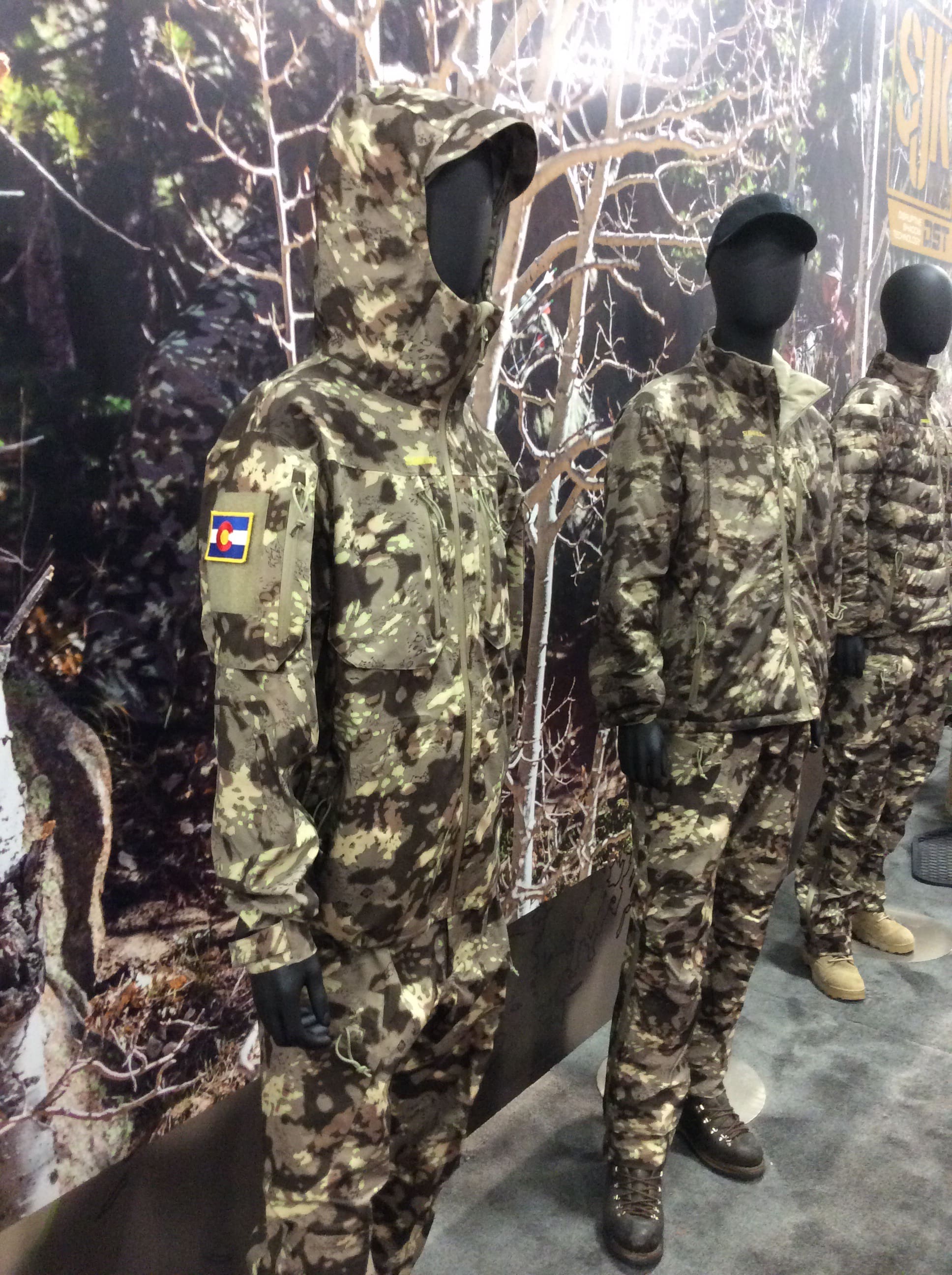
There are currently for garments in the Slumberjack DST line; the waterproof breathable Windage Jacket and Pant, Incog Jacket made with Dridown and the insulated Grit Jacket.
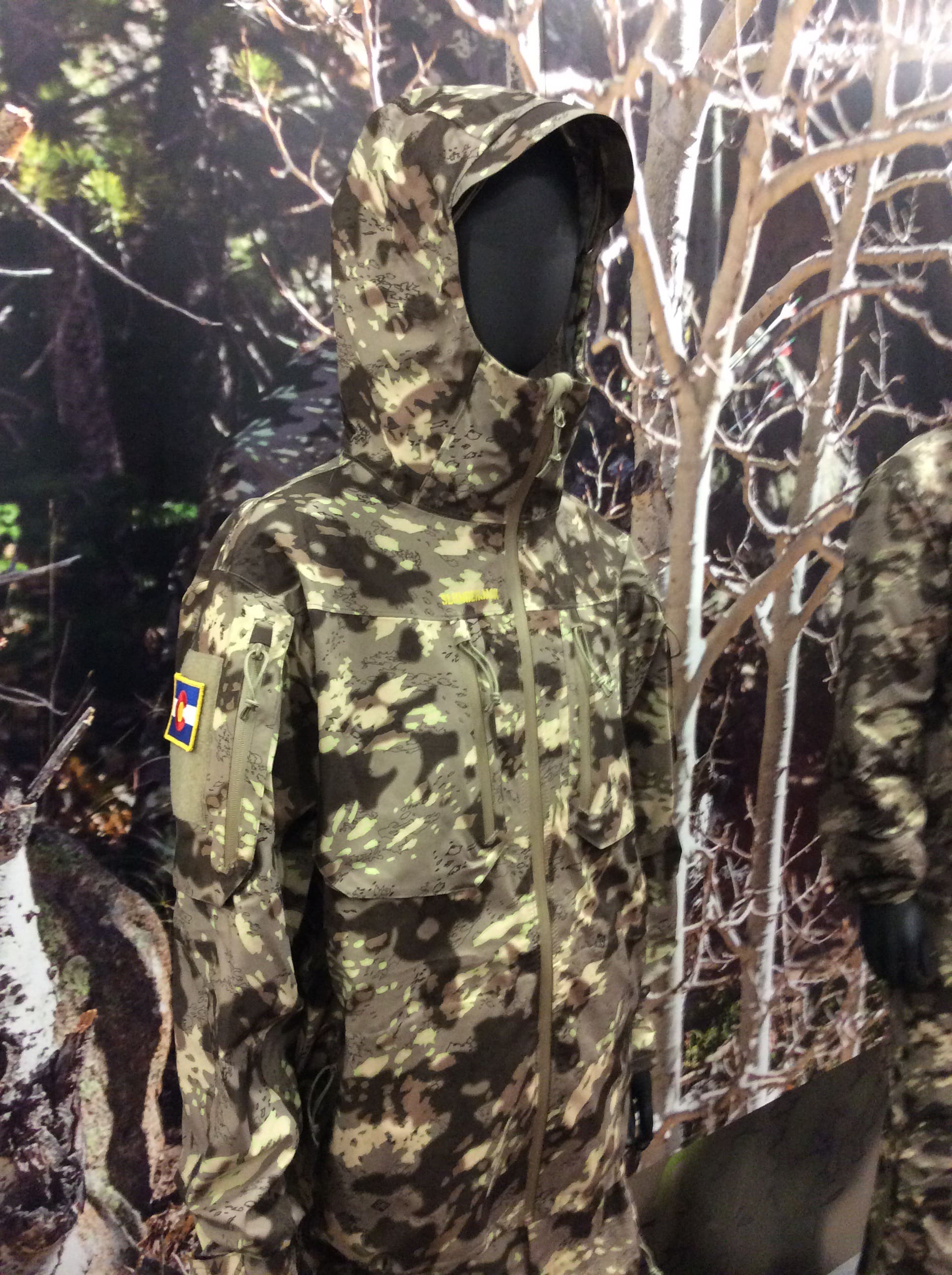

There are currently for garments in the Slumberjack DST line; the waterproof breathable Windage Jacket and Pant, Incog Jacket made with Dridown and the insulated Grit Jacket.

Gerber introduced a whopping 14 new tools for the fisherman at OR Summer Market. They were all impressive and while a few may be crossover products to the tactical market, I thought the Anchor Line was a great place to start.
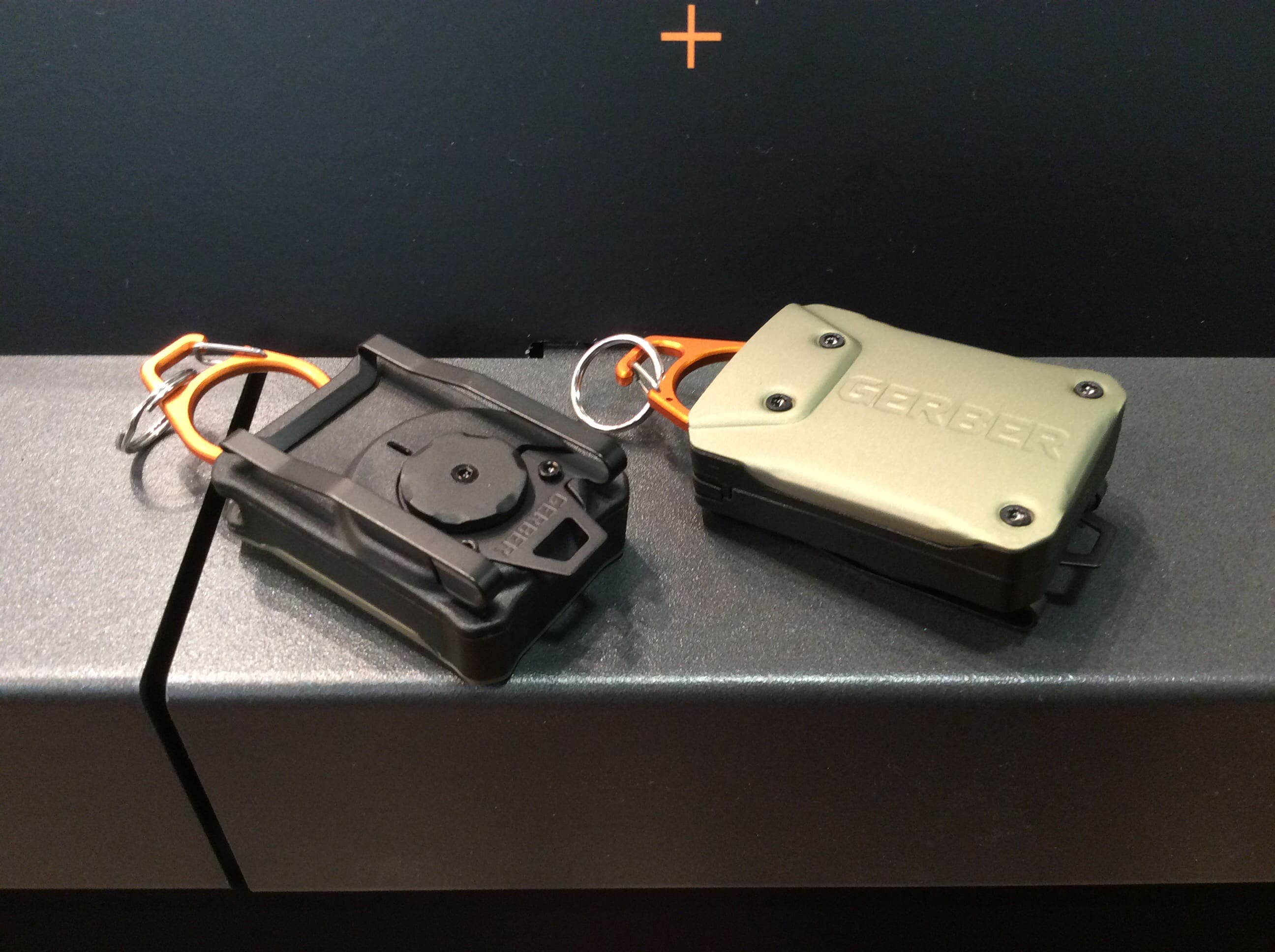
Built in two sizes, Small and Large, the retractable, 36" or 48" Dyneema lanyard can be extended and locked in place in a couple of ways (tip control and line vise). The Anchor Line can be secured to your person via a belt mount, which should adapt well to PALS webbing, lanyard hole or threaded pin.
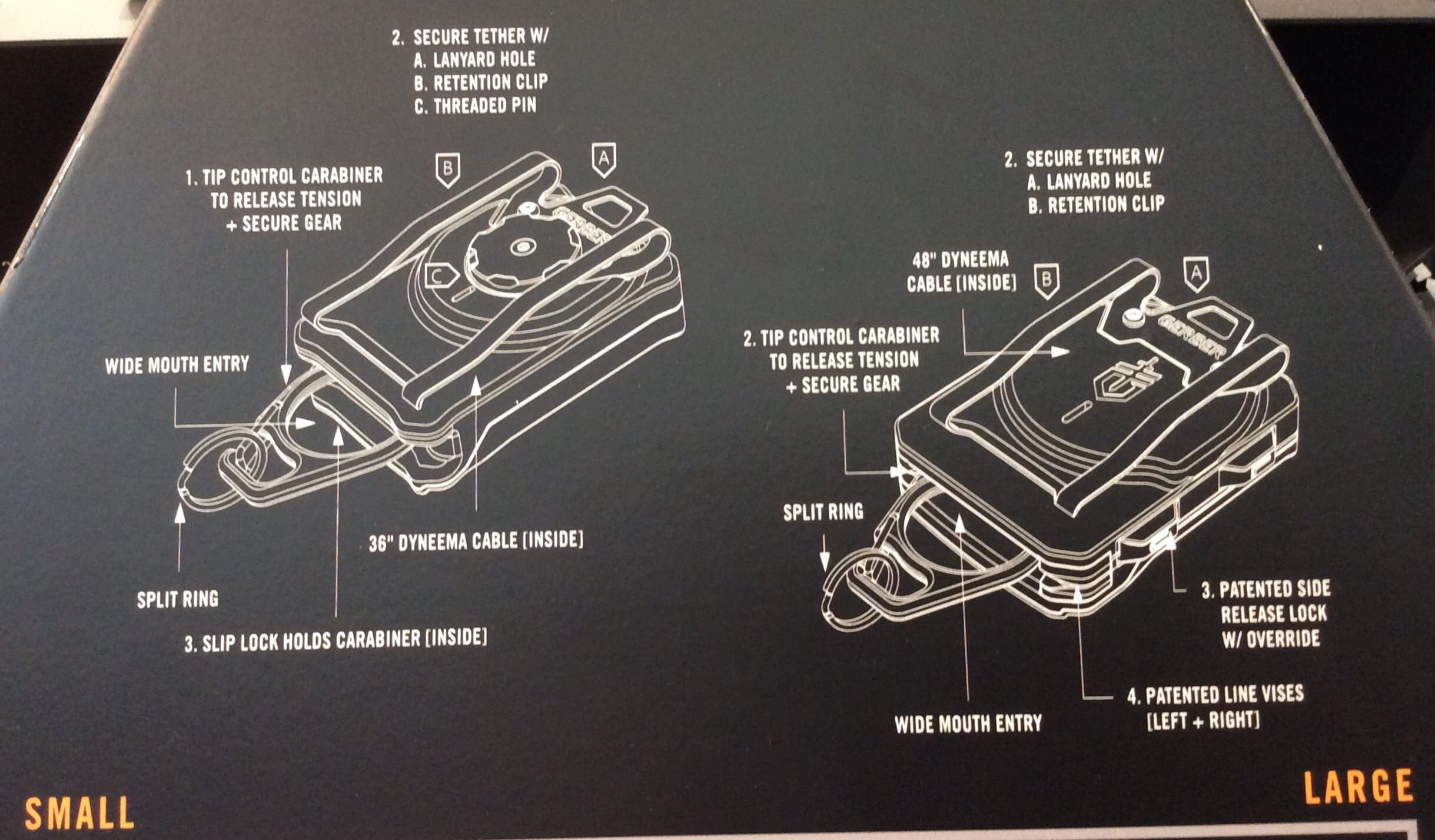
If you are a fisherman, I highly recommend you check out the whole line once it hits the market.
As soon as I pulled into the NEMO Equipment booth I had a desire to sit down, in one of their new STARGAZE Recliners. Offered in three styles, they are like a chair had a baby with a hammock. You can sit, recline, or swing in any of these models.
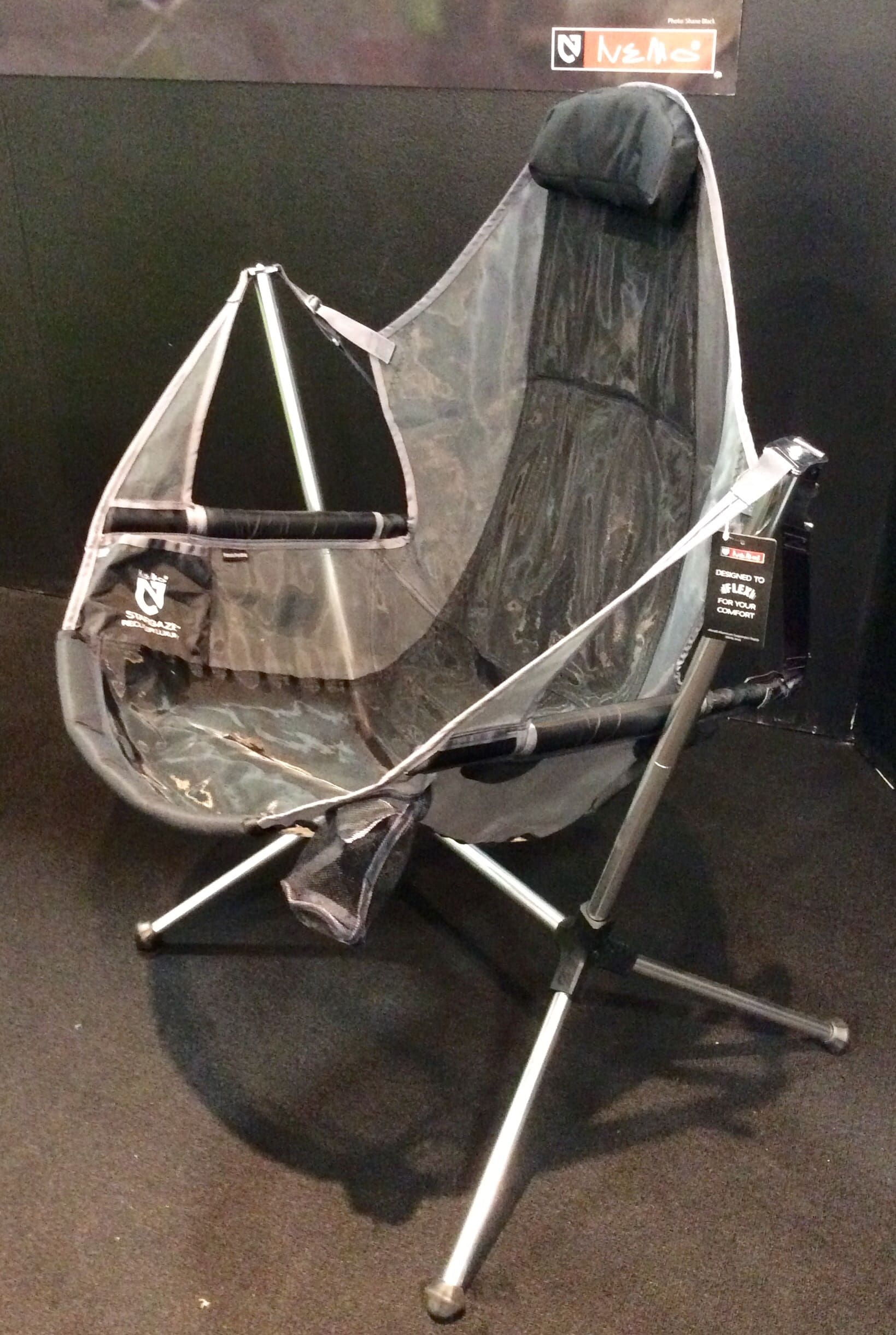
This is the STARGAZE Recliner Luxury. This model features a high back and will recline into a very comfortable position. The aluminum frame and hubs, go together quickly. Combined with the nylon waterproof mesh construction, it will support up to 400 lbs. However, it weighs 6 lbs, 12 oz, so you aren't packing this around. Offered in Graphite (shown) and Birch Leaf Green.
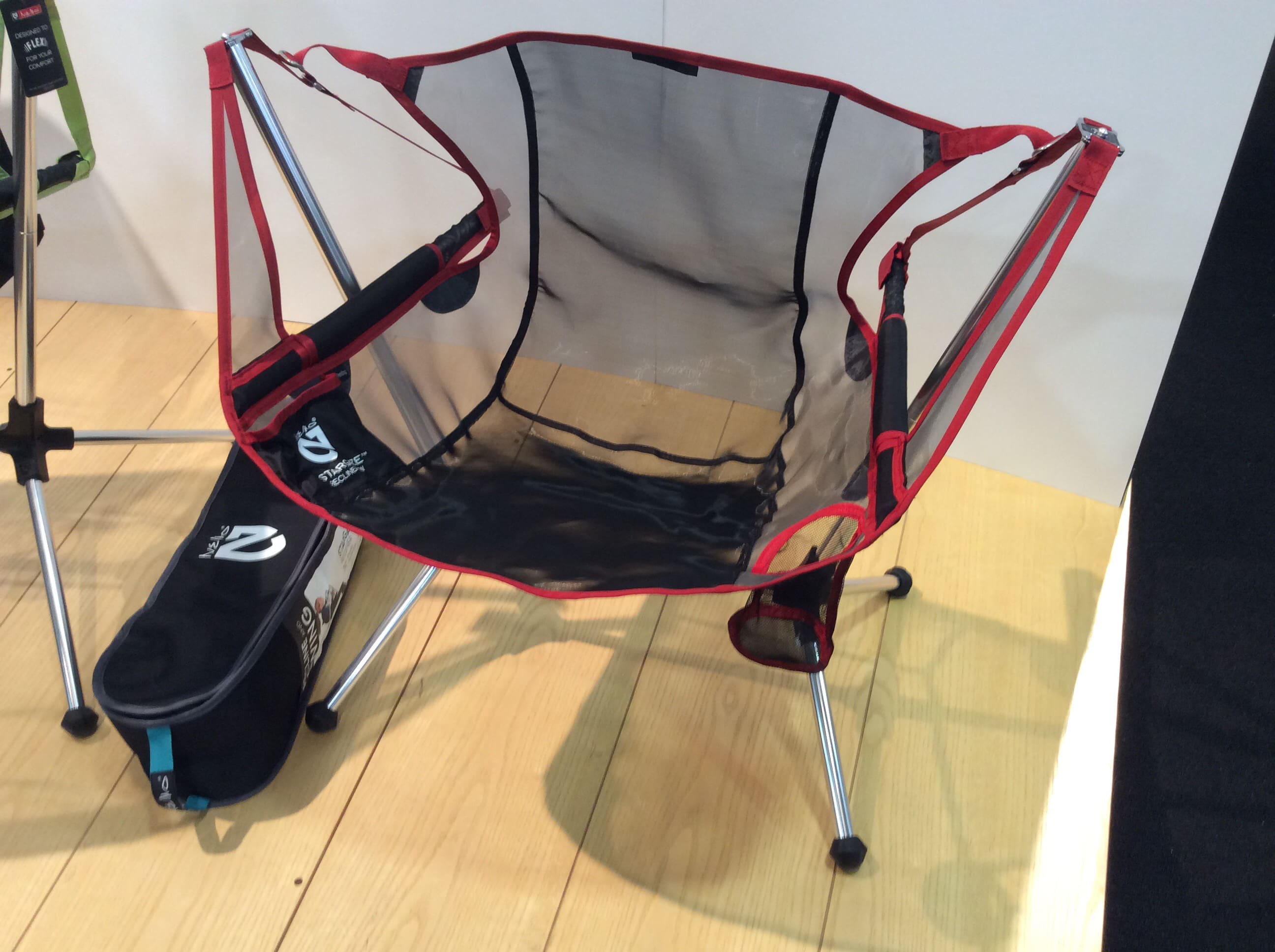
Both the STARGAZE and STARGAZE LITE features the same look, but both have a lower back than the Luxury model. They are lighter at 5 lbs, 11 oz and 5 lbs, 3 oz respectively but only support 300 lbs. The difference is because the Huns ar molded plastic, rather than machined aluminum.
Finally, all three chairs incorporate drink holders. Coming Jan 2018.
Website Coordinator / Office Assistant
Part-time job
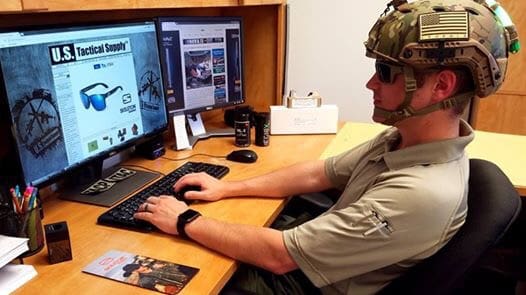
We are looking for a creative and computer savvy individual to work on a variety of projects including website maintenance, graphic design projects, and assist with eCommerce orders.
The ideal person for this job will have computer experience, attention to detail, and be a self-starter. Previous experience with graphics programs or eCommerce programs is a plus.
Visit www.indeed.com for more info.
U.S. Tactical Supply
939 Pacific Blvd SE
Albany, OR 97321
541-928-8645 PH
sales@ustacticalsupply.com
Under the direction of researchers at Brown University, others from Drexel University, Sandia National Laboratory and Team Wendy are working together to study how Traumatic Brain Injuries form and developing new helmet technologies to counter them.
PROVIDENCE, R.I. [Brown University] — With a new $4.75 million grant from the Office of Naval Research, a team of scientists aims to develop new insights into how traumatic injuries form in the brain and develop new helmet technologies to help prevent them.
"The helmets used today on the battlefield and on playing fields are tested against a standard developed in late seventies to prevent skull fractures," said Christian Franck, the grant's principal investigator and an associate professor in Brown's School of Engineering. "We want to update that standard to assess how well a helmet protects the soft tissue inside the skull–the brain–and ultimately develop a prototype helmet that meets our new standard."
Accomplishing that will require a comprehensive, multi-level understanding of how forces are transmitted from a helmet to the skull, from the skull through the brain and ultimately to the individual neural cells that are damaged during traumatic brain injury (TBI).
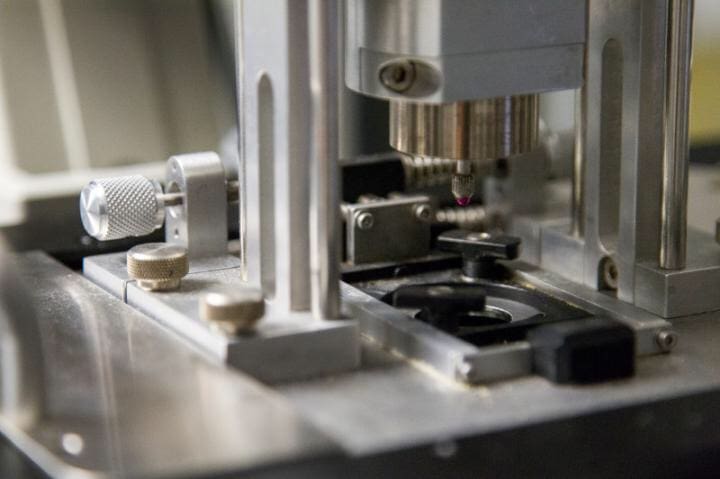
(A device developed by Brown University researchers can deliver compressive impacts to 3-D cultures of brain cells and monitor how the cells react to that trauma in real time. The device could help scientists better understand how traumatic brain injury occurs at the cellular level. photo by: Nick Dentamaro / Brown University)
Franck will work with Brown colleagues Diane Hoffman-Kim and Haneesh Kesari, as well as researchers from Drexel University, Sandia National Laboratory and Team Wendy, a manufacturer of helmets and helmet liners.
Franck's lab at Brown has developed a novel technique for measuring the effects of traumatic forces on individual neurons. Most previous research on TBI at the cellular level has been done on two-dimensional petri dishes, but Franck uses a custom-built device that can apply compressive forces to neurons inside three-dimensional cell cultures, while using a powerful microscope to continuously monitor changes in cell structure. Franck has already used the system to gain new insights into how cells respond to traumatic strain. With is new grant, he plans to establish precise force thresholds for the onset of cellular injury.
"We want to know how much force inside the brain is too much for cells," Franck said. "That gives us a baseline for understanding exactly what kinds of forces are involved in TBI at the cellular level."
The lab of Hoffman-Kim, an associate professor of medical science and of engineering at Brown, works with mini-brains, or neuron bundles that model basic properties of living brains. The mini-brains offer a more complex cell culture than those Franck has worked with previously, which enables the researchers to better recreate the actual brain environment in which neurons operate.
The information gleaned from the cellular level will be combined with results of studies designed to better understand the forces on a helmeted head generated by typical blunt impacts and blast waves. To do that, the research team will work with Team Wendy to develop a sensor system that can be fitted to existing helmets used in combat and athletics. In 2013, Franck and Team Wendy developed a simple but fully functional impact acceleration measuring combat helmet system, which served as a proof of principle for the current grant.
The team will build upon that initial sensor design, then they'll use facilities at Drexel and Team Wendy to test the response of helmets to a wide variety of forces, and how those forces are transmitted to the skull.
To complete the picture of how forces transmitted by a helmet are distributed through the brain to individual cells, Franck will work with researchers at Sandia National Laboratory. The Sandia team who has developed models of the head and neck based on thousands of CT scans. Those models are able to provide insights into how forces are transmitted through soft tissue.
"We want put all these pieces together from the macroscopic level of helmets to the microscopic level of cells to get a complete picture of how these injuries occur," Franck said. "Once we have that, we can start to think about new methods of diagnosis and prevention."
Based on the injury model developed during this project, the researchers aim to deploy a version of their sensor system in combat theaters and playing fields.
"The idea is that when someone experiences a blow to the head, the helmet transmits the force data to a computer," Franck said. "A first responder could then look at that data and determine if TBI is likely and how severe it might be."
Ultimately, the team hopes the data generated by the research can be used to devise a new testing standard for helmets and a new helmet prototype. In developing the prototype, Franck will work closely with Team Wendy and his colleague in the School of Engineering, Haseesh Kesari, who studies the mechanical properties of solid materials.
"What's exciting to me about this is that it spans the microscale to macroscale," Franck said. "We're not aware of any other project that has taken such a comprehensive and tightly integrated approach to understanding how to better prevent these kinds of injuries."
CENTRAL LAKE, MI, July 25, 2017 – A premier industry event, the Great Lakes Law Enforcement Challenge (GLLEC) will officially kick-off this coming September 10th through the 11th at the Shanty Creek Resort and Davis Shooting Range in northern Michigan. This two-day forum will bring together law enforcement officers and first responders from across the region including Illinois, Indiana, Michigan, New York, Ohio, Wisconsin, and surrounding states in various educational workshops and exercises focused on real-world training and advancing 21st-century skills. GLLEC will include debriefs on major LE incidents, certified training conducted by highly respected leaders, live fire team skills challenges, a vendor showcase featuring latest industry technologies, and a product innovation center.
“The Great Lakes Law Enforcement Challenge, in partnership with the Great Lakes Tactical Associations, was established to foster the exchange of information between agencies and association members,” stated Chris Giolitti, Vice President of the Michigan Tactical Officers Association (MTOA). “This forum will help with the creation of vital standards for training and provide an affordable opportunity to the law enforcement community to gain top-notch instruction and up-to-date information on emerging trends and the latest innovative tools/resources available. At its core, this is an officer survival training event – focused on critical aspects such as active shooter incidents, vehicle assaults/ambush, officer rescue, effective police response and tactics, and the mission-critical equipment that support officer performance and protection. MTOA is thrilled to be a sponsor of this inaugural gathering and we look forward to collaborating with participants to ensure its success.”
This free event is open to active law enforcement officers and first responders only. Interested parties are invited to submit their request to be considered for participation in a single or team format by registering at the GLLEC Registration Page. Lively workshops, skills-development sessions and team challenges will be led by some of the LE industry’s most experienced experts. The line-up includes…
Keynote Speakers and Classes:
¬ Debrief with Officer Josh Comitale (Troy Police Dept., NY): Officer Survival while Under Fire
¬ Debrief with Sheriff Michael Kent Neal (Monroe County, AR): West Memphis Shootout with Cop-Killing Sovereign Citizens
¬ Class with Chief (ret.) Jeff Chudwin & Commander Edward Mohn: ITOA Tactical Patrol Officer Program
¬ Class with Officer Dustin Mowery (Ohio State University Police): Vehicle Assaults
Dynamic Training Events:
¬ Vehicle Ambush – Fighting to Win: Simulation of a single officer on patrol being ambushed by multiple adversaries.
¬ Officer Rescue: Focus on teamwork, communication skills, TC3 / Care under Fire skills, and accuracy with multiple weapon platforms.
¬ Traverse and Cover: Focus on teamwork, accuracy and positional shooting. A 4-5-person team will negotiate multiple barricades and firing positions.
¬ Active Shooter: Focus on the preparedness of the team in an all too common scenario that LEOs have to deal with in today’s world.
¬ Team vs. Team Challenge: Teams competing against the clock, barricades, and other teams as they contend for bragging rights and honor of being first ever GLLEC Team event winner.
In addition to support from regional agencies and associations, GLLEC has an impressive roster of vendor partners, including Platinum Sponsors – Armor Express, BUSCH PROtective, ClearArmor, and Teijin; Gold Sponsor – DSM Dyneema; Silver Sponsors – 556 Tactical and Martintek U.S.A; and Corporate Sponsors – Ray O’Herron and Super Quick Clean Guns. Interested in becoming a sponsor? Learn more at GLLEC Sponsors.
“The Ohio Tactical Officers Association (OTOA) is proud to sponsor officers who are attending this instrumental training and competitive event,” said Lt. Wade McQueen of Hamilton Police Dept. and Director of Competitive Events for OTOA. “While some may argue about the world being a scarier place, the facts show that violent crime is increasing and the brazen tactics of criminals are constantly changing. As officers, we must be able to respond effectively and the more prepared we are to recognize and address the threats, the better we can deal with them. When we get an opportunity like the Great Lakes Law Enforcement Challenge to help our members refine their skills, we’re excited to move full speed ahead. This two-day training event will challenge participants and help sharpen valuable skills that we all need. The amount of knowledge to be attained is unlike in any other environment, except actual mission deployment. This is as close as you will get to the real-world experience.”
To join the social conversation, follow the Great Lakes Law Enforcement Challenge on social media: Facebook and Instagram.
About the Great Lakes Law Enforcement Challenge
The Great Lakes Law Enforcement Challenge (GLLEC) combines real-world training with onsite skills application in a competitive, challenging and rewarding event. GLLEC features insightful debriefs and educational sessions on major law enforcement incidents, along with certified training workshops conducted by highly experienced and respected presenters. Packed into two intense days, the Challenge is located at the Shanty Creek Resort and on the Davis Shooting Range in northern Michigan. For more information on GLLEC, please visit www.gllec.com.
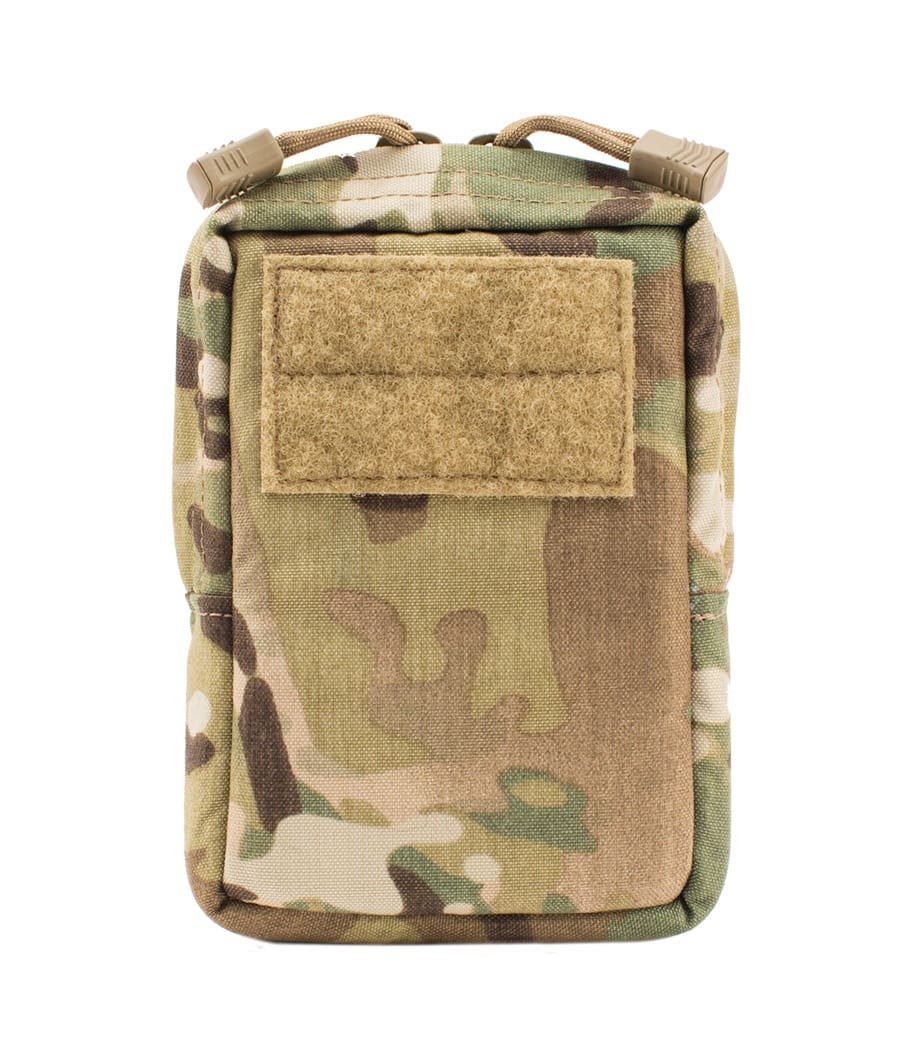
This week, SSD readers get the first look at a limited run of 6/9 VSLIM Pockets. Originally developed for a FirstSpear government contract we have a very small overrun in MultiCam, only with the 6/9 backer.
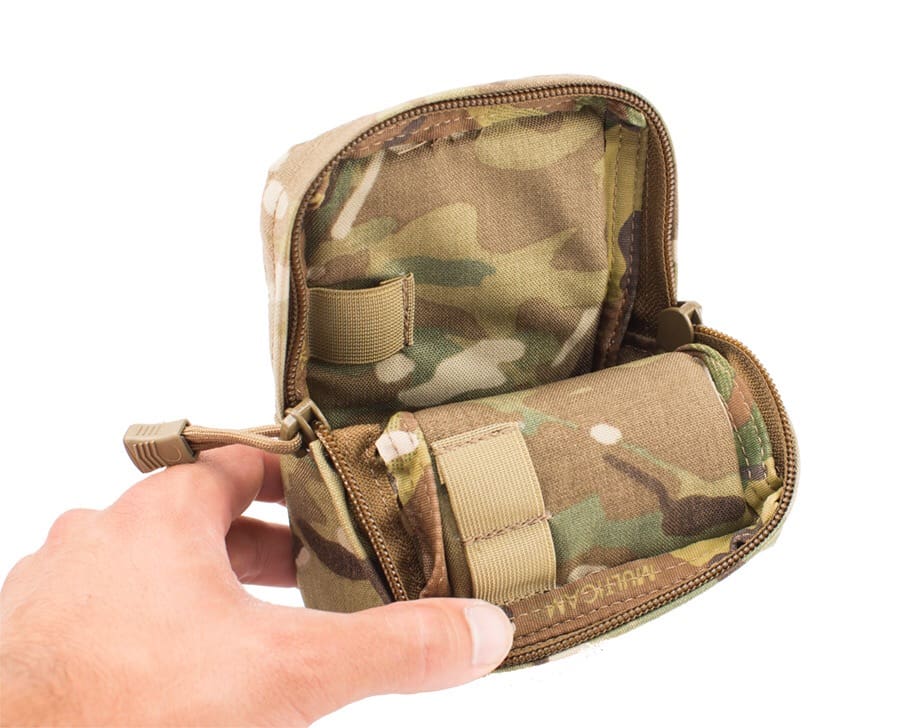
Fully padded with elastic loops to hold batteries, originally intended to hold the VSLIM laser illuminator module.
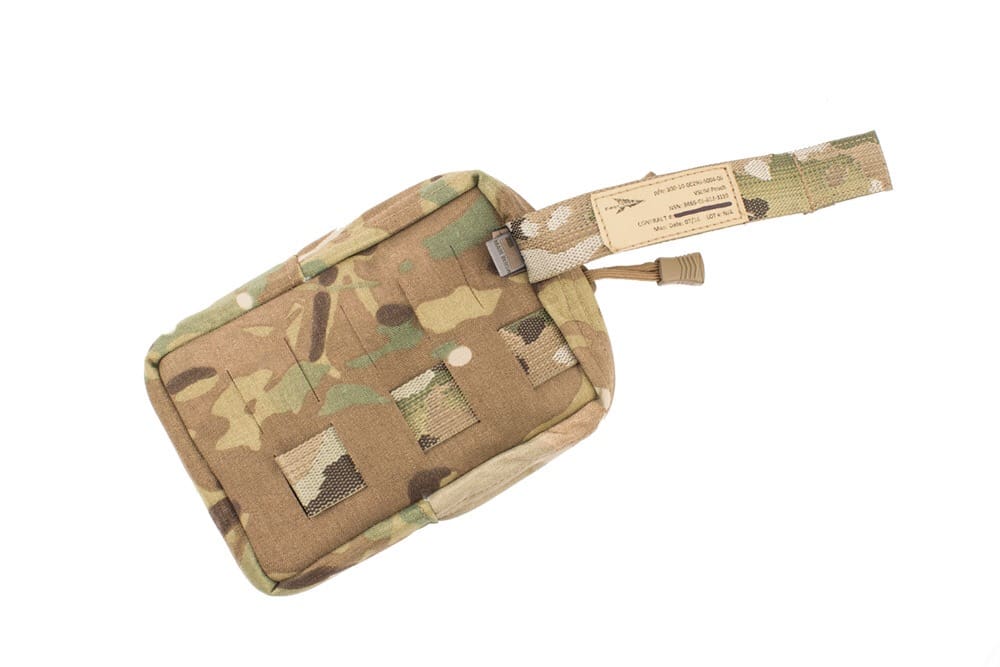
The pockets are brand new, not seconds and still hold the FirstSpear limited lifetime warranty on materials and craftsmanship. Aprox. 5"x7”x1.5”with a 3”x2” loop panel on the front.